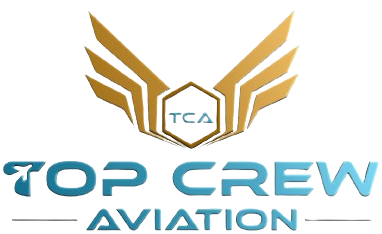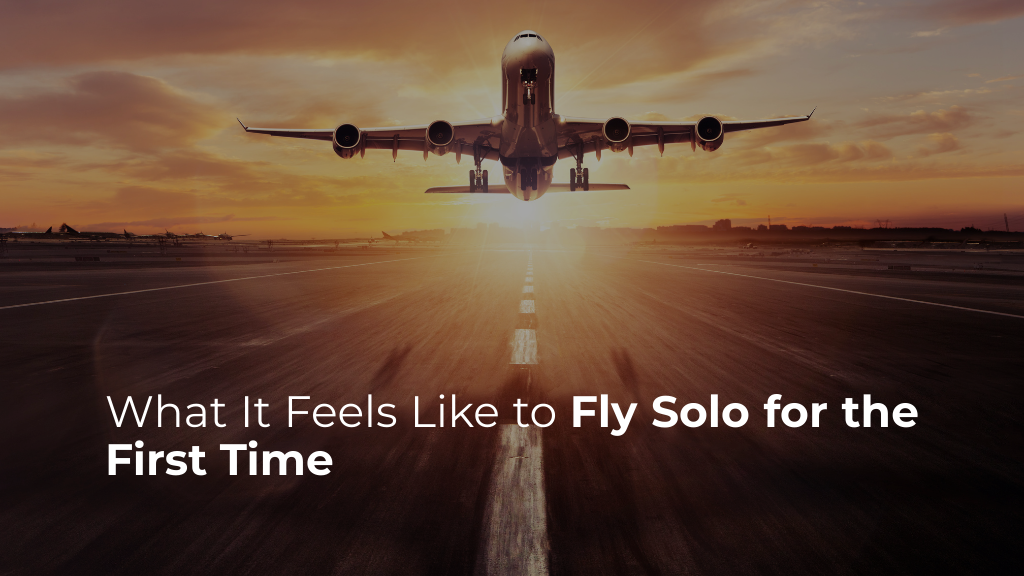For every aspiring pilot, there is one day that becomes a lifelong memory—the first solo flight. It’s a milestone that marks the transition from student to aviator, a moment when you sit in the cockpit alone, release the brakes, and take to the sky without an instructor by your side. The experience is exhilarating, emotional, and unforgettable.
In this blog, we’ll walk you through what it feels like to fly solo for the first time, the preparations leading up to it, and why it remains one of the most defining experiences in any pilot’s journey. If you’re training at a reputed institute like Top Crew Aviation, this moment will be a highlight of your course and a memory you’ll carry forever.
The Build-Up to Your First Solo
Before a student pilot is cleared for their first solo, they undergo rigorous training. From learning basic aerodynamics, navigation, and communication skills to practicing countless take-offs and landings, a student builds up the confidence required to handle the aircraft safely.
Your instructor closely monitors your progress, testing you in different weather conditions and emergency procedures. By the time they say, “You’re ready to fly solo,” you’ve already flown multiple hours under their supervision. Yet, nothing can fully prepare you for the actual moment you’re asked to take the controls alone.
The anticipation is a mixture of excitement and nervousness. Some students describe it as the same rush one feels before an important exam, only multiplied by ten. At Top Crew Aviation, instructors prepare their students with the highest safety standards so that when the solo day arrives, you’re not just ready—you’re confident.
Read Also – How to Get a DGCA Student Pilot License (SPL) in India
The Moment of Realization
When your instructor steps out of the cockpit and leaves you in the pilot’s seat, the reality sinks in—you’re about to command an aircraft on your own. The cockpit suddenly feels larger, quieter, and lighter. There’s no reassuring voice to guide you, no extra pair of hands on standby.
At this point, most student pilots experience a flood of emotions:
- Excitement – You’re about to live the dream of piloting solo.
- Nervousness – The responsibility now lies solely with you.
- Adrenaline – Your senses become sharper, and you feel more alert than ever.
This mix of emotions is natural. It’s part of what makes the first solo such a remarkable milestone.
The Take-Off
As you taxi towards the runway, everything you’ve learned during training runs through your mind—checklists, procedures, and radio calls. Your instructor’s voice might echo in your head: “Check your instruments, stay calm, trust your training.”
Once cleared for take-off, you push the throttle forward and feel the engine roar. The aircraft accelerates, and for the first time, it’s all up to you. As the nose wheel lifts off the ground and the aircraft climbs into the sky, the feeling is indescribable.
It’s a powerful mix of freedom and responsibility—like riding a bicycle without training wheels, only thousands of feet in the air.
The View from Above
Once airborne, the nerves start to settle, and exhilaration takes over. The world below seems peaceful and distant, while the horizon stretches infinitely ahead. You feel a deep connection with the sky, and there’s an overwhelming sense of pride: “I am flying this aircraft alone.”
For many, the view from the cockpit during the first solo feels different than during training. Every sound, every vibration, and every movement of the aircraft feels heightened. You become more aware of how the plane responds to your inputs, and you begin to truly appreciate the art of flying.
The Landing Challenge
While take-off is thrilling, landing is the ultimate test of your training. Most students agree that the landing during the first solo is both nerve-racking and rewarding.
As you approach the runway, you may feel your heart race. You recall every piece of advice your instructor has given: control your speed, watch your altitude, align with the runway, and stay calm.
The moment the wheels touch down smoothly is when confidence soars. You’ve proven to yourself that you can not only take off but also bring the aircraft back safely. That’s when you truly feel like a pilot.
The Aftermath: A Memory for Life
After completing your first solo flight, the emotions hit you differently. Relief, joy, and pride combine into an unforgettable experience. Instructors often celebrate the achievement by cutting off the back of the student’s shirt (a tradition in aviation training) or pouring water over them to mark the milestone.
This tradition symbolizes growth—the idea that you no longer need someone “on your back” guiding you. Instead, you’ve earned your wings as a pilot-in-command. At Top Crew Aviation, this moment is celebrated with enthusiasm, because it marks the true beginning of a student’s independent flying journey.
Why the First Solo Matters
Flying solo for the first time is not just about aviation skills; it’s about personal growth. Here’s why it’s so significant:
- Confidence Booster – It proves to you that you are capable of handling the aircraft alone.
- Sense of Independence – You’ve taken responsibility for your flight from start to finish.
- Motivation for the Future – It strengthens your passion for flying and keeps you motivated through the challenges of training.
- A Rite of Passage – Every pilot, from recreational flyers to airline captains, has gone through this moment.
Tips for First-Time Solo Pilots
If you’re preparing for your own first solo flight, here are a few tips to make the experience smoother:
- Trust Your Training – Your instructor won’t clear you until you’re ready. Believe in the skills you’ve built.
- Stay Calm and Focused – Don’t rush. Breathe, follow the checklists, and stick to procedures.
- Block Out Fear – Nervousness is normal, but don’t let it take control. Focus on the task at hand.
- Celebrate the Moment – Once you land, take time to soak in the achievement. It’s a story you’ll tell for life.
The Emotional Side of Flying Solo
Many pilots recall their first solo as an emotional high point. It’s not just about controlling an aircraft; it’s about realizing a dream, overcoming fear, and proving to yourself that you can achieve something extraordinary.
Some students even compare it to life milestones such as graduation or landing a first job. It’s that significant—because it’s not just about flying. It’s about courage, trust, and growth.
Conclusion
Flying solo for the first time is more than just a training requirement—it’s a transformative experience that defines your journey as a pilot. It’s the moment you transition from being a learner under supervision to a confident aviator trusted with an aircraft and your own judgment.
The rush of take-off, the calmness of being airborne, and the satisfaction of landing safely stay with you forever. For every pilot, no matter where their career takes them—whether to commercial airlines, cargo flights, or private flying—the first solo flight is a cherished memory, a story of independence, courage, and achievement.
At Top Crew Aviation, students are trained not only for technical excellence but also for building confidence, discipline, and the joy of flying. When you finally fly solo, it’s more than a milestone—it’s the beginning of your life as a pilot.


